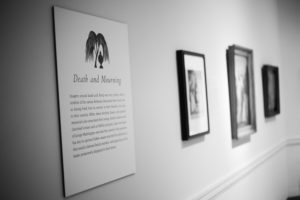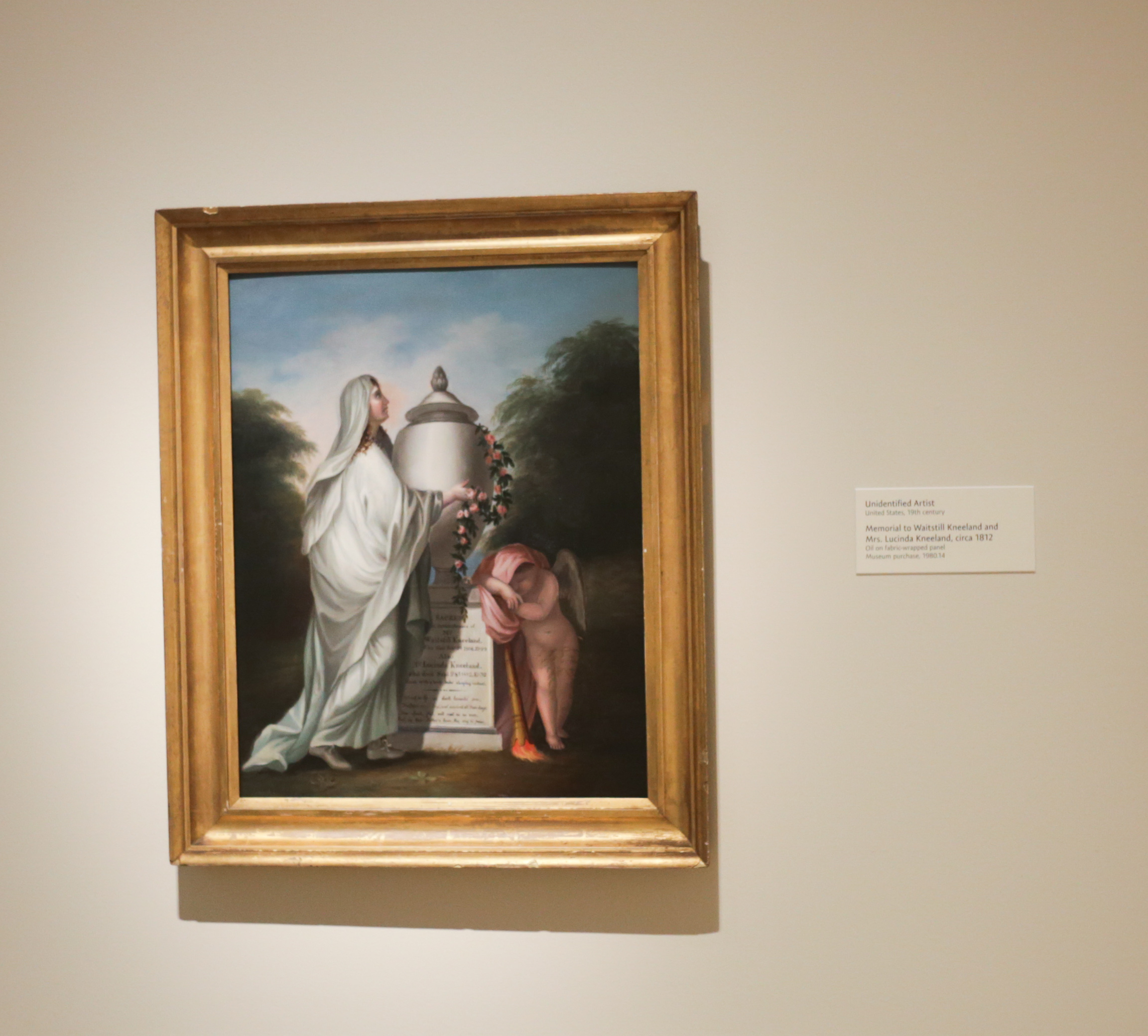By: Sam Margolin, Staff Writer
In the spirit of the Halloween season, the Portland Museum of Art hosted a special event Friday night as part of the Model Citizens: Art and Identity in the United States, 1770-1830 exhibits. The event was an exploration and explanation into mourning embroidery and memorial portraits in 18th and 19th century America and was part of PMA’s 360 experience. 360 experience events are where the museum connects with scholars and artists in the community to provide a fresh perspective on a current exhibition or works in the collection.

This event’s scholarly historian, Libby Bischof, Associate Professor of History at USM offered four 15-minute lectures. Bischof helped put the artwork that was displayed into historical and cultural context. As she explained, some of the artwork’s symbolism would have been very apparent and obvious to the audience of that time period but for modern art fans, the symbols needed some guidance to be understood.
The artwork included in Friday’s event was from the PMA’s permanent collection ranging from oil-on-canvas portraits by well-known painters such as Gilbert Stuart to itinerant portraitists such as Royal Brewster Smith. The mourning portraits that Bischof was asked to speak about were created as a way to understand individual and family representations in the Colonial and Federal periods in the United States.
“Studying these mourning portraits teaches us the visual language of the 19th century especially as it relates to death and mourning.”
Bischof said that many of the works were embroidery and were most likely made by women who were not professional artists but learned their craft in finishing schools. She noted that this was one of the first and only ways for young women of that time to illustrate skill and artistry. Works such as Memorial to Mrs. Lydia Emery, a watercolor on silk painted in 1811 by Susan Merrill in which two mourners are shown leaning over a memorial for Lydia Emery, holds in it both beauty and symbolism.
Bischof explained some of the symbols related to this time period and deathly art that we as modern Mainers might not have picked up on.
For example, we may think that anchors such as the one in Memorial to Mrs. Lydia Emery indicate a sea-related family profession or a nautical death, but during that time anchors were a symbol of eternal life and hope. In Memorial to Mrs. Lydia Emery, the chain on the anchor is broken signifying the end of one’s earthly life. Other interesting symbols included oak trees symbolizing strength, weeping willows symbolizing sorrow and grief, and forget-me-nots symbolizing nothing, literally begging the viewer to never forget.
“Images of urns, weeping willows, columns, clinging vines, angels and flowers all held deeper meanings for the mourners,” Bischof said.
The curator of Friday’s event was Diana Greenwold, Associate Curator of American Art at the PMA. Greenwold highlights the importance of events like this due to the mixing of well-known oil on canvas painters with smaller, more personal works such as miniatures and silhouettes.
“This conglomeration allows our visitors to get a sense of how different groups and social classes worked towards similar goals in this period of representing themselves and their families.”
Greenwold also invited another guest as a part of the Halloween theme. Ruth Monsell of Artful Heirlooms is a portrait artist and silhouettist. She was invited to cut silhouettes to highlight and incorporate the silhouette techniques displayed in some of the mourning pieces. Monsell has a deep respect and admiration for portrait art throughout history especially silhouettes.
“Silhouettes became enormously popular in the 18th and 19th, before the advent of the camera. Very few professionals today are available to freehand cut silhouettes, only a little over 20 in the U.S.,” Greenwold said.
Art is only as powerful as the audience that gives it meaning. Events like the one Friday night will help bridge that gap between scholarly understanding and honest interpretation. Historical fine art does not have to exclude novice art consumer. The more we can branch out culturally the more we can become more aware and more in touch with the world around us.

